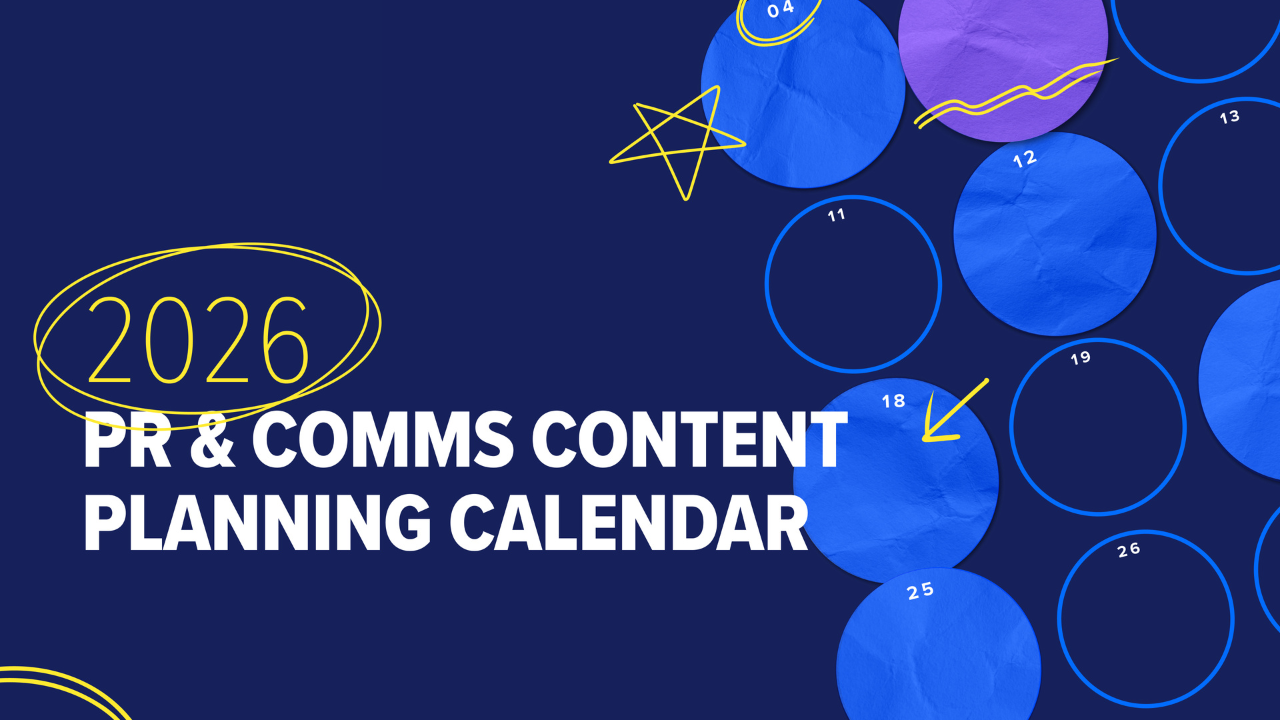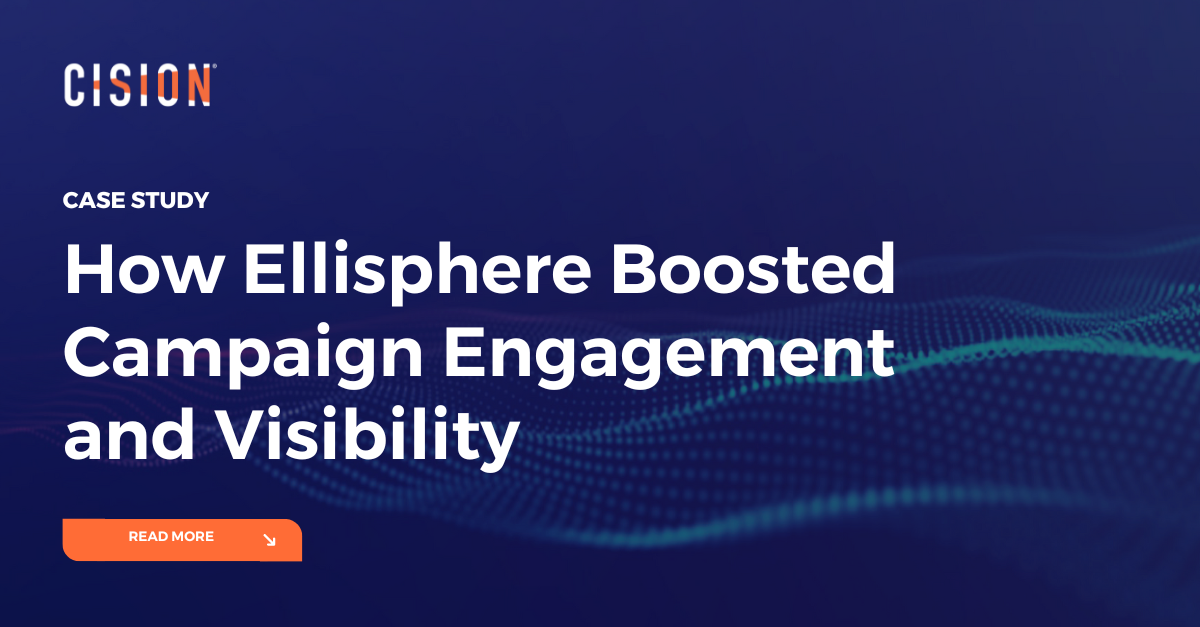Media measurement is a key part of any PR plan, but it comes with its fair share of challenges. As technology advances, there are more ways to capture and track data from your campaigns. Combing through that data can help you quickly identify the messaging that worked, what didn’t, and help develop more effective strategies for the future.
Measurement can also help prove and justify investment, something that’s even more important now that many PR and comms leaders report directly to their CEOs.
According to the 2025 Comms Report, 37% named an inability to measure effectively among the top three factors that challenge their communications efforts the most. (This makes it the second biggest obstacle to comms efforts, just behind “a strategy that is too reactive”.)
This year’s survey also asked industry leaders to weigh in on their measurement challenges and their use of data. Let’s explore these findings and the biggest takeaways for PR and comms teams.
Data and the Metrics That Matter
Nearly 90% of Comms Report respondents answered in the affirmative when asked if they are relying on data and analytics now more than ever. Moreover, two-thirds (66%) of respondents said they employ or have access to a dedicated data analyst.
When asked to specify what they are using data for the most, nearly half said audience targeting, while more than a third specified ROI measurement.
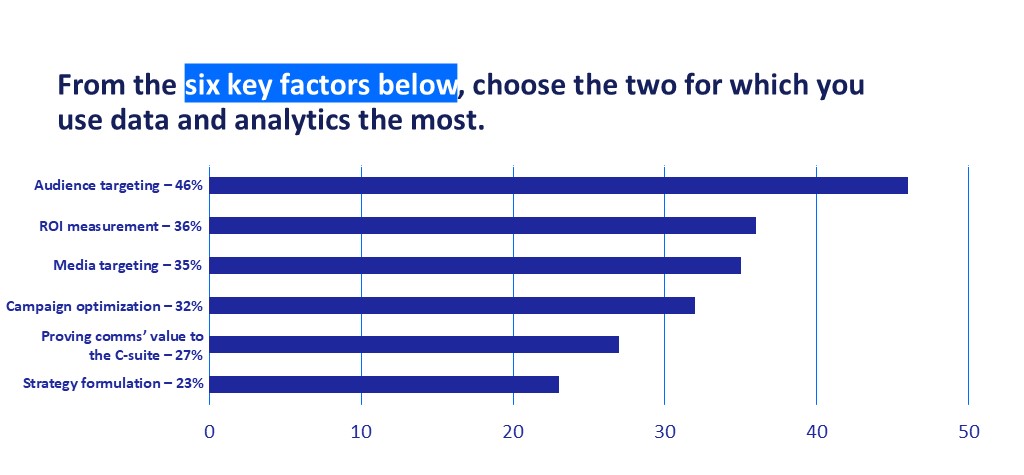
Measurement’s prominence in the data analysis mix suggests just how keen PR and comms professionals are to tie their work to the bottom line.
However, with endless data points at our fingertips, it can be difficult to land on the metrics that matter. As explained by Katie Tod, CisionOne’s VP of marketing, PR teams can now use this information to demonstrate their impact to the C-suite.
“PR teams are no longer limited by basic volume or outdated metrics such as AVE (Advertising Value Equivalency) as a measure of success,” she said. “The tools available now and the metrics they have to access offer a direct line of sight into the tangible outcomes of their [work], indicating where their efforts are paying off and even where they are converting.”
The good news is that there are more data sources available than ever to provide PR teams with effective, reliable media measurement.
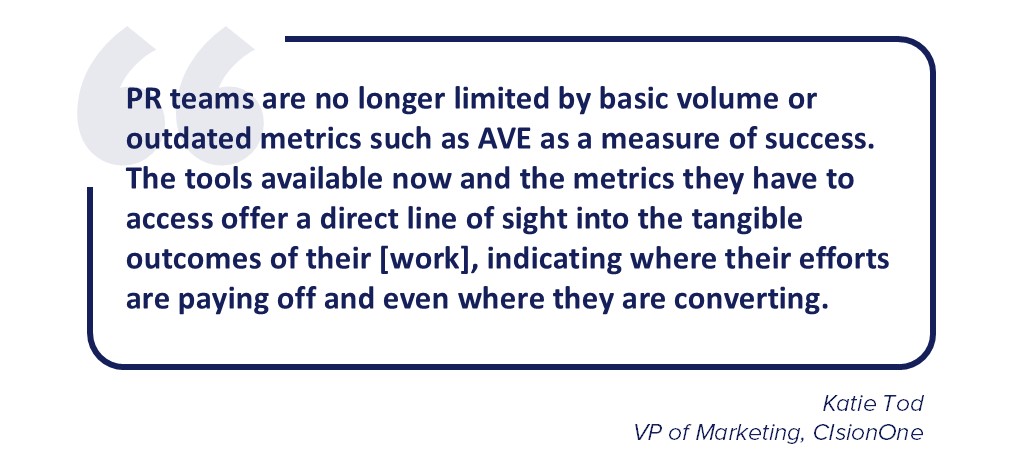
6 Key Metrics for Your Measurement Strategy
While there are many metrics to potentially track, it’s well worth focusing your efforts on a select few to begin with.
Here are key media measurement metrics that can provide meaningful insight.
Media Impressions
This foundational metric measures the potential audience reach of your content, offering an early view of its distribution scope. Media impressions set the stage for deeper engagement analysis, indicating visibility across media platforms.
Reach and Conversions
This includes website traffic metrics such as views, repeat visitors, bounce rate, and time on page, as well as more tangible conversion metrics like shopping cart revenue, orders, or sign-ups. It’s hard to argue that a PR campaign is ineffective if it’s driving revenue.
Share of Voice (SoV)
This compares your brand's visibility and influence in the industry against that of your competitors. It’s a key indicator of your market position and brand influence, informed by both the volume of mentions and the prominence of the journalists and media influencers discussing your brand.
Engagement
These metrics include user actions such as likes, shares, and comments. Analyzing engagement helps identify which aspects of your campaign are resonating with your audience, moving beyond mere numbers to assess the quality of these interactions.
Brand Mentions
Monitoring brand mentions across print, online, and social channels sheds light on conversations and perceptions outside your owned channels. This metric captures the public’s unfiltered, authentic opinions and comments about your brand, which can inform strategic decisions that lead to meaningful outcomes.
Sentiment
This metric evaluates the tone and context of audience interactions, indicating public reaction to your content. Positive brand sentiment is valuable, of course, but neutral or even negative sentiment can also offer insight into areas that need improvement – from customer service to campaign messaging.
Media Measurement Tools
Measuring and demonstrating impact remains a consistent pain point for PR teams. The latest Comms Report data shows that 36% struggle to identify the best tools to measure effectively, while 24% lack access to efficient measurement tools.
There are myriad options available for effective measurement, so consider the following for gathering essential data:
- Media monitoring: Platforms like CisionOne track mentions of your brand and provide data on media impressions, sentiment, trends, and much more. This type of monitoring is key for messaging and brand reputation and mitigating comms crises. For those seeking free options, Google Alerts offers basic monitoring to track online mentions.
- Social listening: Tools like Buffer offer basic social media analytics for tracking metrics across multiple platforms. Paid options like Cision Social Listening and Brandwatch offer advanced analytics, sentiment analysis, reporting, benchmarking, and management functionality.
- Web analytics: Platforms such as Google Analytics and Adobe Analytics provide detailed data on views, unique users, time on page, where users are coming from, user behavior, and more. Connecting campaigns and messaging to consumer actions is an important way of demonstrating business impact.
- Surveys: SurveyMonkey, Google Forms, and Zoom can help gather insights on audience perceptions, preferences, and behaviors. These can be as simple as asking whether a consumer would recommend your brand’s product or service to more in-depth questionnaires and interviews.
While these individual platforms can provide value, an overabundance of media measurement tools can make it harder for effective media measurement. Multiple tools gathering unconnected and inconsistent data make it more difficult to tie results directly to outcomes.
One solution to this challenge is an integrated PR media measurement platform like CisionOne. It offers a distinct advantage by combining multiple data streams into an all-on-one application with customizable dashboards and reporting.
4 Tips for Effective Media Measurement in PR & Comms
This year’s Comms Report shows an industry that’s striving to meet measurement challenges as its faced with pressure to deliver bottom line results for their organizations. As we ponder these findings, how should PR teams approach their media measurement strategies? Here are four tips to take into consideration.
Track Meaningful Metrics, Not Just Volume
Avoid getting lost in a sea of media mentions by focusing on metrics that directly connect to business objectives, such as sentiment analysis and share of voice against competitors within your industry. If you are eager to look at mentions, then prioritize quality over quantity by evaluating the credibility and reach of media outlets covering your brand or campaign.
Establish Clear Baseline Measurements
Before launching any PR campaign, document your starting metrics to accurately measure subsequent progress and impact. You’ll also need a standardized reporting framework that allows for consistent comparison of performance across different initiatives over time.
Link Media Coverage with Business Outcomes
Move beyond traditional PR metrics by connecting media exposure to tangible business results like website traffic, lead generation, and potential revenue impact. UTM parameters (Urchin Tracking Module tags added to URLs to track performance) can be used to see how coverage drives digital engagement and conversions.
Conduct Regular Strategic Reviews
Schedule monthly or quarterly media performance reviews to identify trends, successes, and areas for improvement. These insights should feed into continual refinement of your communication strategies and media outreach approaches.
Final Thoughts on Media Measurement Challenges
Effective media measurement presents both challenges and opportunities for today's PR professionals. As the industry moves forward, success increasingly depends on your ability to connect communications efforts directly to business outcomes.
Rather than chasing every available metric, focus on developing a more focused approach that aligns with your organization's strategic objectives. Integrated tools like CisionOne can consolidate data streams, save time, and provide more meaningful insights. By embracing data-informed decision making, you'll elevate your team's credibility with leadership while delivering more impactful campaigns.
Download the 2025 Comms Report for more PR insights from PRWeek and Cision.
Find out how CisionOne can help PR monitor, measure, and analyze your earned media impact. Schedule time now to speak to one of our experts.
Most Recent Posts
Cision Resources
-
E-books and Guides
Comprehensive how-to guides on strategy and tactics
-
Case Studies
What are other brands doing – and how can we learn from them?
About Simon Reynolds
Simon is the Senior Content Marketing Manager at Cision. He worked as a journalist for more than a decade, writing on staff and freelance for Hearst, Dennis, Future and Autovia titles before joining Cision in 2022.
Learn More. Do More. demo new
PR Tips, Case Studies, and Product Updates
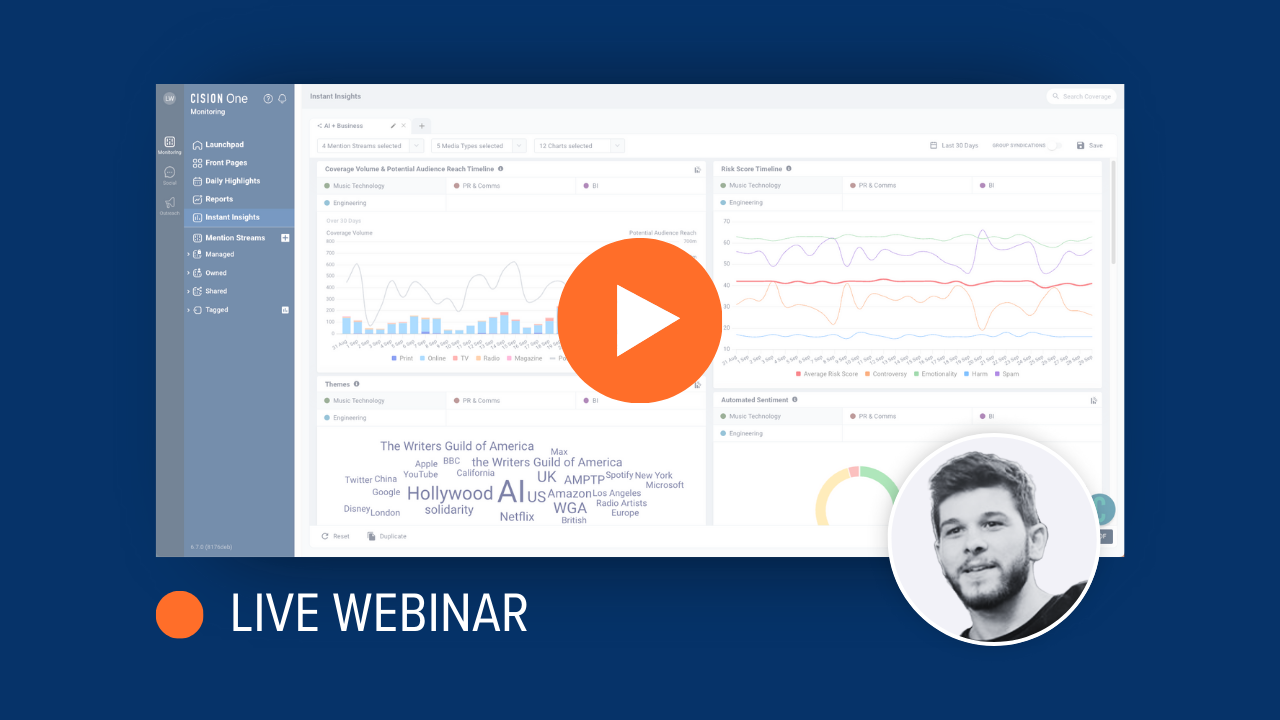
[On-Demand Webinar] The Next Generation of Media Intelligence: From Gorkana to CisionOne
Explore CisionOne, a revolutionary media intelligence platform, and the evolution of Gorkana. Learn key features and strategies from Luke Williams, CisionOne Product Marketing Manager. Elevate your media outreach to new heights!

